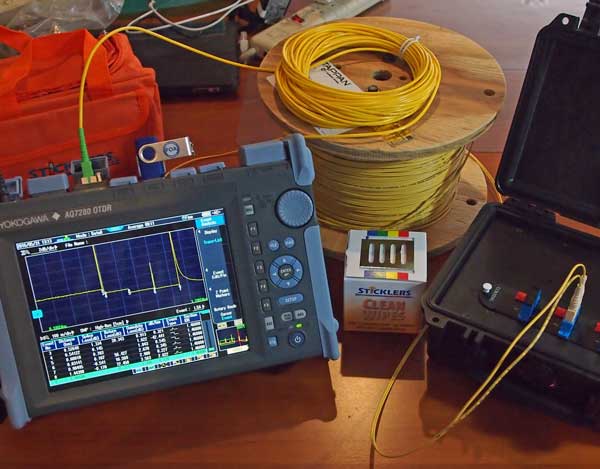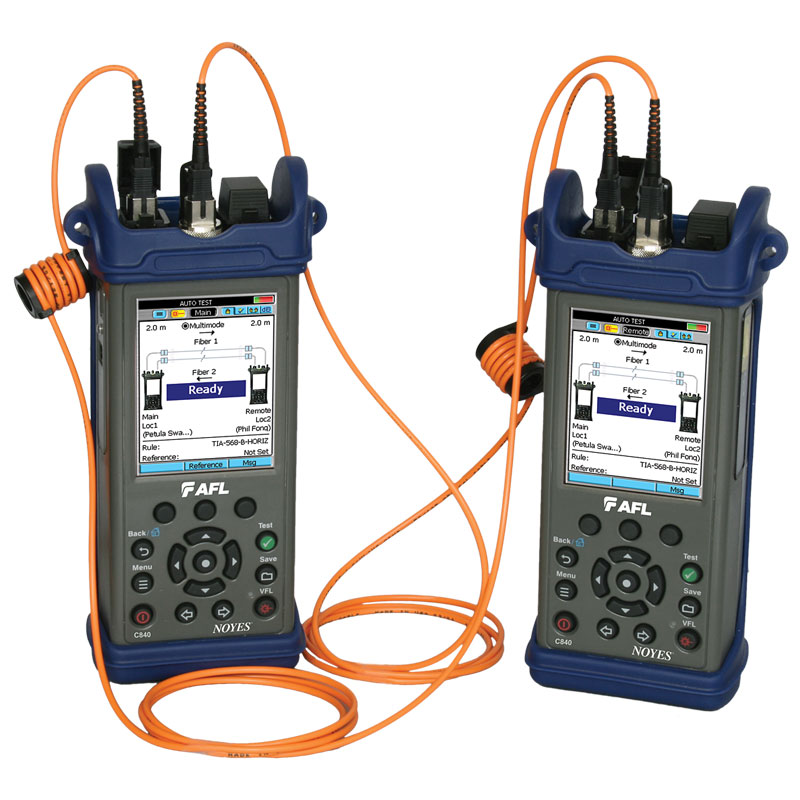The latest optical fibre testing equipment enhances troubleshooting and diagnostics in telecommunications.
Wiki Article
Discover the Importance of Optical Fiber Testing in Modern Telecommunications
In the world of modern-day telecoms, the value of optical fiber testing can not be overemphasized, as it offers as the foundation for guaranteeing network reliability and performance. What are the certain advantages that normal screening deals, and exactly how might it shape the future landscape of telecoms?
Recognizing Optical Fibre Testing
Optical fiber screening is a critical process in telecoms that makes certain the stability and efficiency of fibre optic networks. This testing incorporates a variety of treatments created to evaluate the physical and useful attributes of optical fibers - fibre testing equipment. Trick criteria assessed consist of optical power loss, data transfer capacity, and mistake place, which are essential for keeping high-grade interaction web linksThe testing process generally includes making use of specific tools such as Optical Time-Domain Reflectometers (OTDR) and Optical Power Meters. OTDRs are utilized to recognize and define faults, mates, and ports within the fiber, while power meters determine the transmitted light signal strength to identify performance.
Moreover, testing is carried out at various phases, including during setup, upkeep, and troubleshooting, to guarantee that the network fulfills sector requirements and operational needs. Compliance with standards established by organizations like the International Telecommunication Union (ITU) and the Telecoms Sector Organization (TIA) is vital.
Advantages of Normal Checking
Regular screening of optical fibres yields many advantages that substantially enhance network integrity and efficiency. One of the main benefits is the very early discovery of potential issues, such as breaks or deterioration in the fibre, which can result in expensive downtime if left unaddressed (ofda). By determining these problems proactively, telecommunications service providers can lessen solution disturbances and ensure consistent connection for their consumersIn addition, regular screening helps to maintain the integrity of signal quality. As optical fibers age, their performance can be influenced by elements such as ecological problems and physical tension. Regular assessments enable the tracking of signal loss and overall transmission efficiency, ensuring that the network operates at optimal degrees.
One more considerable benefit is conformity with sector standards. Normal testing sustains adherence to governing needs, thus alleviating lawful and financial risks connected with non-compliance. Additionally, it boosts the total lifespan of the fiber infrastructure by facilitating prompt upkeep and repair services.

Usual Checking Methods
Evaluating optical fibers uses different methods to make sure the integrity and performance of telecommunications networks. Amongst one of the most typical methods is Optical Time Domain Name Reflectometry (OTDR), which assesses the entire length of the fiber by sending a pulse of light and determining the representations brought on by imperfections or breaks. This technique offers in-depth details about the area and seriousness of faults.An additional prevalent method is using Optical Power Meters, which gauge the quantity of light sent with the fiber. This method assists determine the loss of signal toughness, making sure that it fulfills sector requirements. Additionally, Aesthetic Fault Locators (VFL) are employed to recognize breaks or severe bends in the fibre by predicting a noticeable laser light into the wire.
Insertion loss screening is also important, as it measures the loss of signal power resulting from links and splices within the network. Moreover, using Polarization Setting Diffusion (PMD) screening assesses the impact of fiber features on signal stability.
Each of these methods plays an important function in maintaining the efficiency and reliability of optical fiber networks, ultimately adding to smooth telecoms operations.
Influence On Network Efficiency
The integrity and efficiency of optical fibre networks directly affect total network efficiency. In modern telecommunications, the performance of information transmission counts heavily on the top quality of the optical fibers used. Any kind of destruction in the fibre's problem-- whether as a result of physical damage, contamination, or too much flexing-- can cause increased depletion and signal loss, dramatically affecting data integrity and speed.Normal optical fibre screening is necessary to identify and correct prospective problems prior to they show up as network failings or slowdowns. Techniques such as Optical Time Domain Name Reflectometry (OTDR) and insertion loss screening enable professionals to determine the performance of fibre links accurately. These tests not just examine the physical condition of the fibers yet additionally guarantee compliance with industry requirements, thus safeguarding the network's reliability.
Furthermore, a well-kept optical fiber network adds to decreased functional prices and enhanced consumer fulfillment, as end-users experience less interruptions and greater data prices. Inevitably, the focus on strenuous optical fibre screening techniques offers as a foundation for sustaining durable telecoms framework, ensuring that solution companies can fulfill the expanding needs for data transfer and connection in today's electronic age.
Future Fads in Examining
As we look ahead, advancements in modern technology are positioned to reshape optical fibre testing in telecoms. The increase of automation and expert system (AI) is anticipated to boost the effectiveness and precision of testing processes. Automated testing systems can carry out extensive evaluations with very little human treatment, substantially decreasing the capacity for mistakes and accelerating time-to-deployment.Furthermore, the assimilation of artificial intelligence algorithms will allow anticipating maintenance, enabling network suppliers to foresee prospective problems before they rise right into failures. This proactive strategy not only improves network integrity yet likewise optimizes operational expenses.
One more arising fad is the advancement of mobile screening tools that supply real-time analysis - robotic vision. These tools will encourage service technicians to perform on-site diagnostics rapidly, assisting in quicker resolutions and enhancing solution top quality
The development of 5G networks additionally necessitates the development of testing techniques. As transmission capacity demands raise, standard screening techniques might no more are sufficient. Ingenious options such as optical time-domain reflectometry (OTDR) and advanced spooky evaluation will certainly end up being important in making sure the honesty and efficiency of high-speed optical fibre diameter analyser links.

Final Thought
In verdict, optical fiber screening is crucial for guaranteeing the stability and dependability of modern telecommunications networks. Routine screening methods not just assist identify prospective problems such as signal loss and faults however additionally add to boosted network efficiency and customer contentment. As the demand for smooth connection continues to expand, the fostering of innovative testing methods will certainly play a vital duty in preserving top notch network requirements and supporting the developing landscape of telecommunications.Report this wiki page